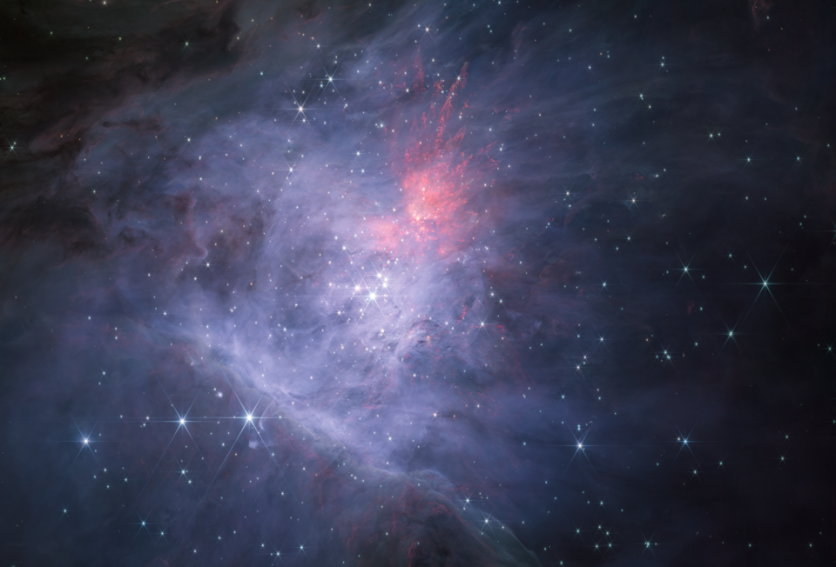In a celestial ballet of light and shadow, NASA's James Webb Space Telescope unveils a mesmerizing tapestry within the Orion Nebula, showcasing a stellar spectacle that defies the imagination.
These awe-inspiring images, now accessible through the European Space Agency's ESASky application, offer a portal into the heart of one of the night sky's most glorious wonders.

Treasure Trove for Astronomers
The Orion Nebula, scientifically known as Messier 42, is a prominent feature in the night sky, situated just south of Orion's belt. At its core lies the youthful Trapezium Cluster, composed of massive stars whose intense ultraviolet radiation illuminates the surrounding gas and dust.
Behind the scenes, within the OMC-1 molecular cloud, protostars continue their journey to stellar birth, as explained by ESA. The Orion Nebula is a stellar nursery, which means it is a region where new stars are actively forming.
Within its clouds of gas and dust, protoplanetary disks and young stars are in the process of developing. These disks may eventually coalesce into planets and solar systems.
The nebula is approximately 1,344 lightyears away from Earth and is estimated to be around 24 lightyears in diameter. It is easily visible to the naked eye and is a prominent feature in the winter sky for observers in the Northern Hemisphere.
The Orion Nebula is a treasure trove for astronomers, offering a rich tapestry of celestial phenomena and objects. Within its gaseous embrace, scientists find outflows and planet-forming disks encircling young stars, embedded protostars, enigmatic brown dwarfs, free-floating planetary mass objects, and photodissociation regions where the powerful radiation from massive stars shapes and influences the chemistry of surrounding gas.
Largest Datasets Collected by NASA's James Webb Space Telescope to Date
These captivating new images were acquired using NASA's James Webb Space Telescope's near-infrared camera, NIRCam. The telescope has created two expansive mosaics, one from the short-wavelength channel and another from the long-wavelength channel.
These mosaics are among the largest datasets collected by Webb to date. Due to their exceptional resolution and expansive coverage, they have been integrated into ESASky, offering a convenient platform for exploring the multitude of intriguing astronomical sources they contain.
The short-wavelength mosaic capitalizes on Webb's remarkable angular resolution, unveiling intricate details within the disks and outflows surrounding celestial objects.
Meanwhile, the long-wavelength mosaic presents a mesmerizing view of the intricate network of dust and organic compounds known as polycyclic aromatic hydrocarbons.
Related Article : NASA's Hubble Space Telescope Captures 'Butterfly Nebula' In Stunning Motion | Fun Facts About This Beautiful Space Butterfly

ⓒ 2025 TECHTIMES.com All rights reserved. Do not reproduce without permission.




